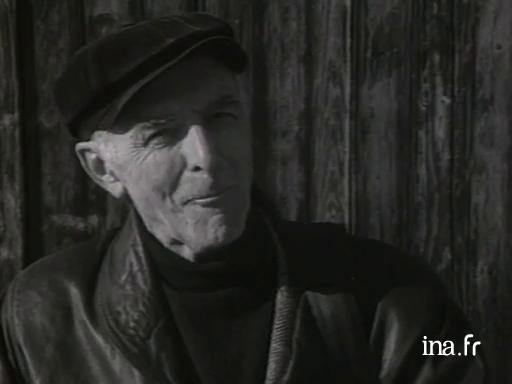Presenter news
You now find yourself between Montrouge and Gentilly, Robert Doisneau, Robert Doisneau, one of the greatest photographers of our time.
He has agreed to spend a day with us, and is taking us to visit his suburban neighborhood (banlieue).
A report by François Rebote.
Robert Doisneau
In order to try and justify this activity that never stops, in spite of my age, I think that there are three elements at play: curiosity, disobedience, and from time to time, amazement.
Ah, that yes.
First you must disobey, and not try and imitate what has been done in other disciplines like painting or film.
The look to literature, you know, it influences me a lot.
Often in my solitary walks, a phrase from Prevert, a line from Blaise Cendrars, Ardelet help me a lot.
I even take this like the little songs people whistle.
Journalist
Are you Parisian?
Robert Doisneau
I am almost Parisian, not completely.
I am mainly a 'banlieusard', a suburban person.
I was born a stone's throw from here.
It took me sixty years to do 1400 meters.
You cannot say that I am a globetrotter.
I was born in Gentilly, in the valley of the Bièvre, in a décor that was absurd and gray, and that is now a much more concrete landscape.
I moved to Montrouge here because I really like this studio.
I feel good here, the kids are happy, the kids were born here, we lived with my wife here.
I like my place.
I'm going to sit on the stairs of the loggia to read.
Ah, it is good here.
Sometimes, when one has wandered, I have never been a great reporter, or a great traveler, but one needs this.
I was expedited as a package to Siberia, on the Pacific coast.
But I do not travel well.
First, I am monolingual.
And in order to work well, I have to be able to speak with people
Journalist
And you are happy to return to Montrouge?
Robert Doisneau
Ah, yes I am happy to find...
I am not a homebody at all, it isn't that.
But there is a certain smell, there is something, and the memories, the books, the testimonies of friendship from my friends, that it is sometimes necessary to return to the nest.
There is something that is tormenting me a bit at the moment, that is I have a report to do, not really a report, but a small book to do on the commune where I was born in Gentilly.
And I am not quite sure how to go about it.
Journalist
Could I follow you?
Robert Doisneau
I would prefer to be alone, but today, we will go together.
There, that is the old Gentilly, the valley of the Bièvre.
The river flows about three hundred meters from here.
And listen: we are walking in this area today which for me, with that dim lighting, is encouraging of laziness.
I don't even need to calculate anything.
I know that this film: four hundred asas, F-11, five centimeters, everything is right.
Journalist
Five centimeters, is that the speed?
Robert Doisneau
Ah, yes.
Journalist
That is the aperture?
Robert Doisneau
The aperture.
Journalist
And four hundred asas, is that grainy, or...
Robert Doisneau
Not very.
It is more than passable.
Journalist
And you develop yourself your black and white photos?
Robert Doisneau
I continue to cook up my projects.
Journalist
You like that?
Robert Doisneau
No, not really, but when I take my films to be developed it is not very well done, and I always accuse others.
Here I can only accuse myself.
Journalist
There you will photograph that shutter, for example, it inspires you, no?
Robert Doisneau
No, here I would like to stay, to have the rectangle here on the left, because it is nonetheless a subject that is very rich, and then wait for lunch in order to...
I am thinking, there, a woman is coming.
I think she is coming this way.
Do not be surprised, you know, it is a city where the gardens are suspended.
Above you, see, there is one there.
Journalist
Yes.
Robert Doisneau
There, that one, it is willingly placed.
This one grew wildly.
I tried to get a picture of the left façade.
I think that at this hour of the day, the light is not very good for me.
We should come back at the end of the day.





